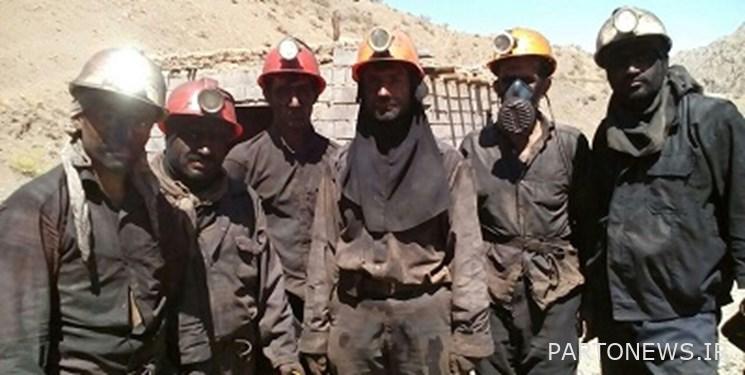242,000 workers were on the verge of unemployment last year/preventing the closure of more than 3,000 production units

According to the judicial group of Fars news agency, quoted by the Media Center of the Judiciary, the Supreme Leader of the Revolution, in his Nowruz message of 1402, again emphasized the issue of supporting production and named this year the year of “inflation control and production growth”. The meeting they had with some workers of the country on the occasion of Labor Day emphasized the importance of work and the value of knowing it in the society.
The head of the Judiciary also stated in a message that he published on the occasion of the new year: the judicial system in the past year in categories and fields such as ensuring the security of investment and supporting production, blocking bottlenecks and sources of corruption, fighting corruption in all fields and reforming He took effective steps against corrupt and problematic procedures.
Hojjat al-Islam and Mohseni Ajei also emphasized: In 1402, which is based on the country’s major priorities by the leadership of Farzaneh Elkhebal, we are determined to implement our designed programs and measures in line with the support and All-round support for producers and economic activists and ensuring the security of investment in the country and helping the government in curbing inflation with more strength and diligence so that the activists in the field of production and economy who have a heart for the excellence of dear Iran, can advance their goals in a more favorable environment. Let them take the initiative.
Reviewing the performance of the Judiciary last year shows that in the period of judicial transformation and excellence, valuable measures have been taken to revive production units or prevent their closure by the Judiciary, which has led to the employment and prevention of unemployment for thousands of workers.
In the provinces, the provincial headquarters to support the resistance economy meet regularly and have close cooperation with economic activists and entrepreneurs.
With the actions of the judicial system to support the production and solve the legal and judicial problems of the factories last year, 3 thousand 485 production units were revived or their closure was prevented, which resulted in the unemployment of 242 thousand 274 workers all over the country. The country has also prevented.
In this context, the judiciary of Ilam province has held 52 meetings resulting in 71 resolutions to prevent the closure of 25 production units, resolved the problems of 22 production units and revived 5 production units, which has resulted in the employment of 342 workers.
In Tehran province, with the support of the judiciary, 69 production and industrial units were reactivated and returned to the production cycle or their closure was prevented, this performance also led to the employment of 7 thousand people.
The revival and exit from bankruptcy of the companies “Gazloleh”, “Prande Pardaz Industrial Slaughterhouse”, “Folad Siyaden”, “Sablan Parche” and “Khamene Textile” with about 1,943 workers are examples of Tehran’s judicial actions in support of production.
With the intervention of the Justice of Bushehr province, about 10 companies and production units were supported, and 14 companies were resolved by the formation of the resistance headquarters of the province, and the closure of “Pak Shimi, Aram Said and…” companies and the unemployment of 2,600 of their workers was prevented
Last year, 229 production units were restored and returned to the production cycle with the actions of the Yazd province judiciary, which prevented the unemployment of more than 20 thousand workers.
With the intervention of the judiciary of Qom province, the problems of 22 production units were solved and their closure was prevented, and 270 workers returned to work.
In Qazvin province, 91 meetings of the provincial resistance economy headquarters were held with 137 resolutions, in which 45 production units solved the problem and 52 production units of the province were revived and returned to the production cycle, and the unemployment of 6 thousand 923 workers was prevented.
Last year, 91 stagnant and semi-stagnant industrial, mining and agricultural units were revived as a result of the judicial actions of Sistan and Baluchistan province, and the re-employment of 409 workers was provided.
In Lorestan province, 61 production units were revived or prevented from closing down, and 190 workers returned to work.
In Mazandaran province, by holding 80 meetings with investors, 90 production units with more than 2,360 workers were supported.
The judicial authorities of West Azerbaijan province made 70 visits to the production units and prevented the closure of 100 small and large production units and 8 thousand workers returned to work.
In East Azarbaijan province, 100 production units were revived and 262 workers were prevented from being unemployed.
In Semnan province, 41 production units were prevented from closing and 42 production units were revived, and in this regard, unemployment of 6,565 workers was prevented.
In Hamedan province, 9 factories were revived and the problems of 60 production units were solved and 59 workers returned to work.
In Kermanshah province, 64 production units were revived or their closure was prevented, and 2,480 people returned to employment directly and indirectly.
In Golestan province, 109 production units were revived or prevented from closing, and 2,769 people returned to work.
In Alborz province, 20 large production units were revived or prevented from closing, and in this regard, more than 4,900 workers returned to work.
In North Khorasan province, 17 production units were revived or prevented from closing and 125 people returned to work, and in South Khorasan province, 12 production units were revived or prevented from closing and 330 people were prevented from being unemployed.
In Zanjan province, 8 production units were revived or their closure was prevented and 220 people returned to work.
In Hormozgan province, 49 production units were revived or their closure was prevented, and the re-employment of 845 workers was provided.
In Kohgiluyeh and Boyer Ahmad provinces, 114 factories were revived or their closure was prevented, and 1,530 people returned to work.
Over the past year, the problems of more than 75 industrial production units in the central province have been followed up in various areas, especially legal and judicial issues, and despite the economic problems, the closure of production units in the province has been prevented, and the unemployment of 13 thousand and 100 workers has been prevented and the production process And employment in the province has been maintained.
In Kurdistan province, 22 production units were revived or prevented from closing, and 697 people returned to work.
In Kerman province, 40 meetings of the resistance economy headquarters of the province were held and the legal and judicial aspects of 198 cases were examined, which ultimately led to the prevention of unemployment of 8 thousand workers and the creation of employment opportunities for 840 new workers.
In Chaharmahal and Bakhtiari province, 31 production units were revived or their closure was prevented, and the employment of 180 workers was provided.
In Khuzestan province, with the follow-up of the resistance economy policy implementation headquarters of the Khuzestan judiciary, more than 2,000 workers returned to work and 22 production units were revived or prevented from closing down.
In Razavi Khorasan province, 763 production units were revived and unemployment of more than 100 thousand workers was prevented.
In Isfahan province, the problems of 27 industrial and production units were examined and decisions were made to remove production obstacles and stabilize 23,773 jobs.
In Zanjan province, 8 production units were revived or their closure was prevented and 220 people returned to work. Last year, the judicial authorities of Gilan province also helped to revive 109 production units and employ 2,769 workers.
In Ardabil province, the problem of 657 small and large production units was investigated and solved by taking judicial measures and issuing special orders. Also, 37 stagnant production units, which were closed since last years, were revived and 600 people were employed in these units.
In Fars province, 750 workers returned to work and 324 production units were restored or prevented from closing.
The end of the message/T 1306

